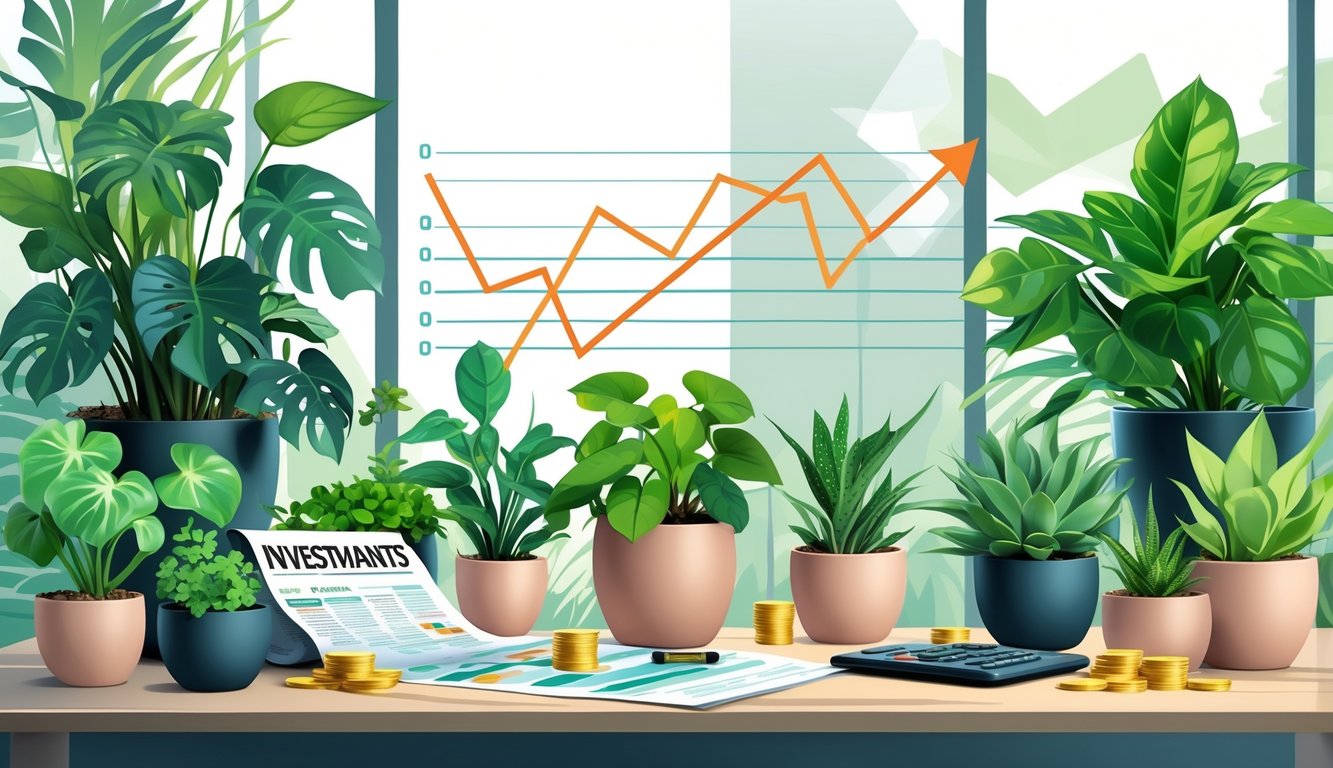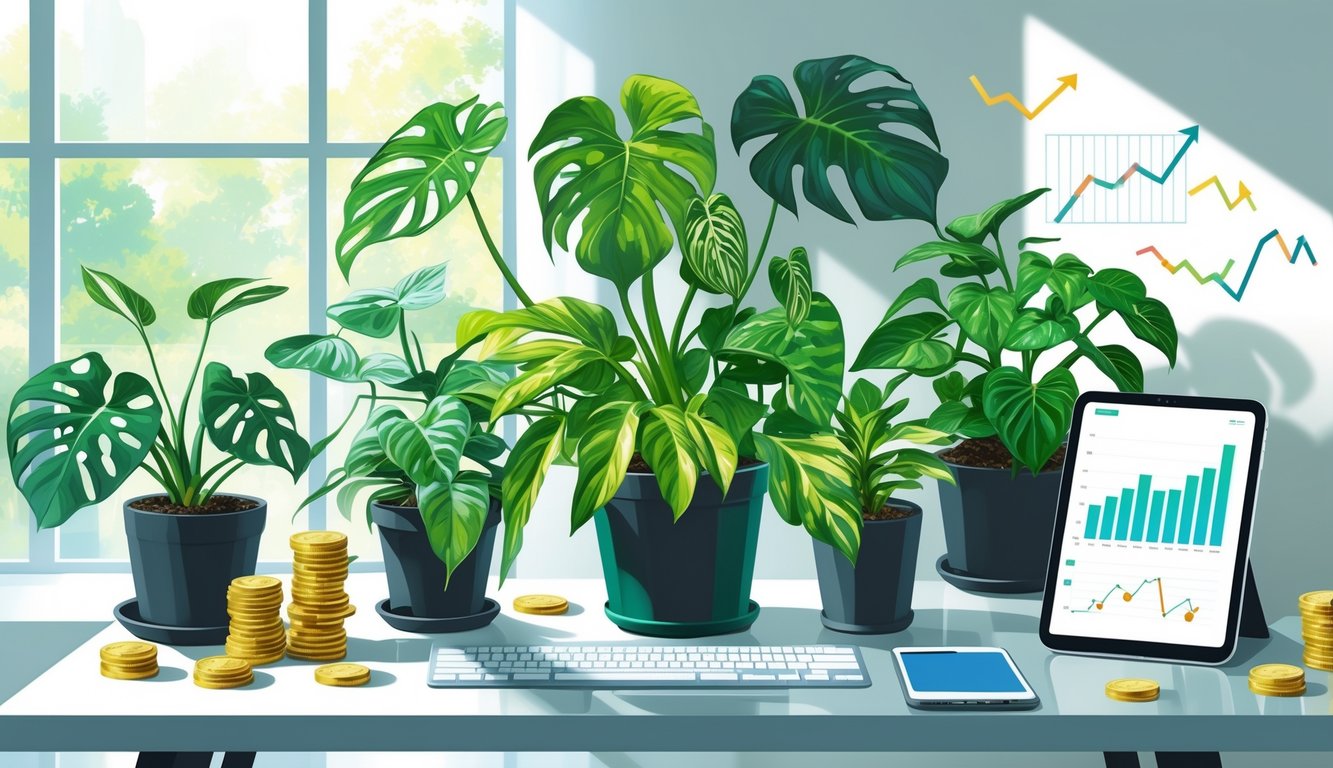
Popular Rare Houseplants for Investment

I used to think the whole Monstera cutting craze would fizzle out, but nope. Prices keep climbing, collectors keep obsessing over weird leaf patterns, and I lose more sleep chasing rare listings than checking my actual investments.
Monstera Varieties
One time, I spotted what looked like a Monstera ‘Albo-Variegata’ in my neighbor’s window. Got excited. Turns out, it was plastic. Typical. Real Monstera varieties like Albo-Variegata or the unicorn-level Monstera obliqua Peru? They go for thousands. Not even because they’re “pretty”—they’re mostly holes. Hard to propagate, that’s the real reason. I’ve seen a single rooted cutting sell for more than a gold necklace. (Seriously, my friend got $350 for his. Auction was wild—people quoting care tips like they’re stock analysts.) Mistake Monstera adansonii for obliqua? Rookie move. Obliquas are basically lace with a stem. I still don’t get why people obsess over white splotches, but collectors track leaf mutations like crypto traders watching altcoins.
Philodendron Collectibles
Still mad I never bought a Philodendron Spiritus Sancti. Someone whispered at a plant expo that a mature one sold for $7,000. I thought it was a joke. Nope. Most people have only seen grainy photos, but every investor has it on their “Holy Grail” list. Availability? Basically zero. Even seasoned growers get burned wiring deposits to overseas sellers for stuff like Pink Princess or White Knight—half the time, customs destroys the package. In my last group chat, someone said he only trusts US-based tissue culture labs now. Bonus: sellers sometimes ship in deli containers. Prices bounce all over the place depending on variegation, root health, and whether the plant survived two days in a cardboard box.
Exotic Variegated Plants
Why am I even obsessed with these weird color-mutant plants? I mean, I’ll buy two monsteras—one’s got a pink splotch, one’s just green. The pinky one? Gone in seconds, every time, for some price that makes me question my life choices. White, pink, yellow streaks—everyone loses their minds. Have you seen what people are asking for half-moon Philodendron Pink Princesses? Multiple times the cost of a regular one, which, come on. Investors (actual finance bros, I think) snap up Monstera Thai Constellations like they’re blue-chip stocks. And nobody ever mentions that variegation makes these plants way weaker—someone dumped a reverted cutting on me last year. Looked fancy, then just… green. A collector buddy swears their Cream Splash Pothos tripled in value after some viral Instagram post. It’s basically a regular pothos with a hangover. People will pay stupid money for a Syngonium Milk Confetti, which is honestly more drama than it’s worth. Dealers slap “Mint” on the label and charge extra, patent or no patent. I don’t know, it’s a circus.
Hidden Gems in the Plant World
Meanwhile, you ever notice the sad, ignored pots at the back of plant shows? That’s where the real stuff hides. I found an Anthurium Warocqueanum seedling for, like, nothing. No, I’m not telling you where. Once picked up a Rhaphidophora Tetrasperma labeled “Mini Monstera” for $8, then watched it auction for over $100 later. Indie expos? Always some freak plant hiding in plain sight, but only if you know what you’re looking at. Some dude next to me at a market skipped a rare Pilea Peperomioides “Mojito” because the pot was ugly. People are weird. I’ll grab compact or slow-growers the second I see them, even if they look like nothing. Best investments I ever made were the plants nobody else wanted—until suddenly, everyone did.
Building a Valuable Plant Collection
Every scroll on Instagram, someone’s flexing a $700 Philodendron or a Monstera that’s apparently under 24/7 surveillance. It’s wild—some of these rare plants cost more than my car insurance. I get the itch: do I blow rent money on an Anthurium, or finally buy a humidifier that isn’t garbage? The whole thing is just odd—chasing, trading, decoding Latin names, and dealing with groups that treat auctions like underground poker.
Finding and Sourcing Rare Plants
Ever get so deep in a buy-sell group you forget what you were looking for? I’ve accidentally priced out Paphiopedilums instead of groceries. The hunt is the fun part—refreshing, watching for flash sales, private nursery drops. Supposedly, the rarest tropicals go for $300 to $5,000 and vanish in under an hour. I mean, who’s buying these? Not me (yet).
Big box stores? Forget it. Try collectors-only popups, or online nurseries like Steve’s Leaves, Carnivero, The Rare Leaf (Australia, where nothing is ever in stock). Auction sniping is brutal; someone will always outbid you by three bucks at 2 am. Social media hype? Apparently, plants can jump 80% in value in a year. I once ordered from a “friend’s cousin” overseas—customs ate my order. So, yeah, check import rules or just cry into your empty pot.
Connecting with Plant Enthusiasts and Collectors
Think you’ll just collect rare plants alone? Good luck with that. My group chats explode at midnight if someone scores a variegated Hoya. It’s all “humidity flex” and chaos. In-person swaps—bring ziplocks, bring a mister—are smoother than any online trade.
It always feels like everyone’s hiding their best stuff. Are they? Probably. But honestly, relationships get you access. People offer cuttings if they trust you won’t kill them. Local botanic clubs, specialty growers on Instagram—those are the secret doors to presale lists. Ridiculous, but I’m not complaining. Someone shipped me a rooted half-moon Monstera just because I sent a holiday card. That’s the internet for you.
Evaluating Plant Authenticity
Nobody warns you: half the plants online are not what the label says. I tried to “rescue” a $100 “Albo” and got plain green leaves for six months. If the fenestrations look wrong, or the label’s spelled weird, or there’s no photo of the mother plant—run. Fakes, mislabels, scams everywhere. Plants can’t talk, so you need receipts. Literal receipts.
I always double-check with collector photo databases (Reddit, Facebook, whatever). Timestamps with today’s newspaper—old school, but after getting burned, I’m paranoid. Auctions are chaos. Sometimes, veteran collectors will DM you a warning about a seller. Listen to them—they remember every scammer.